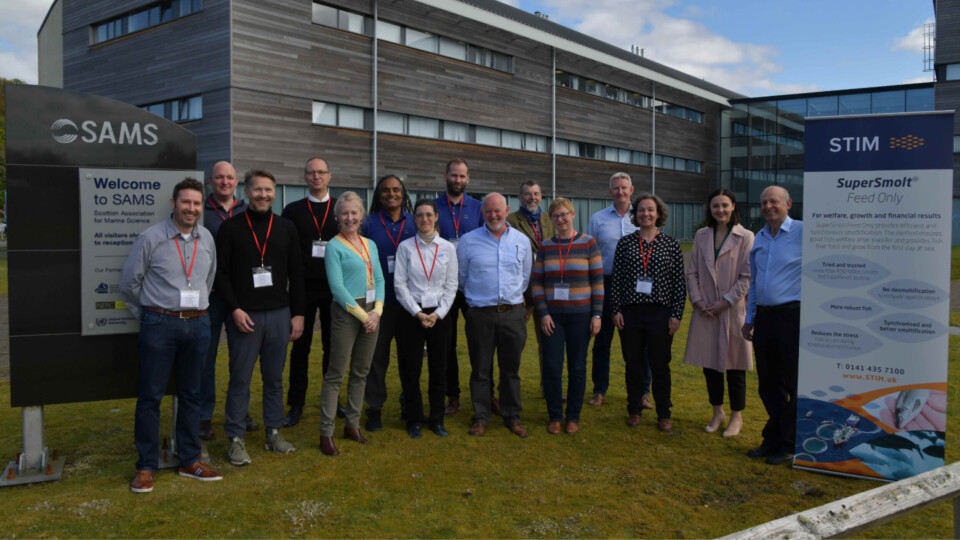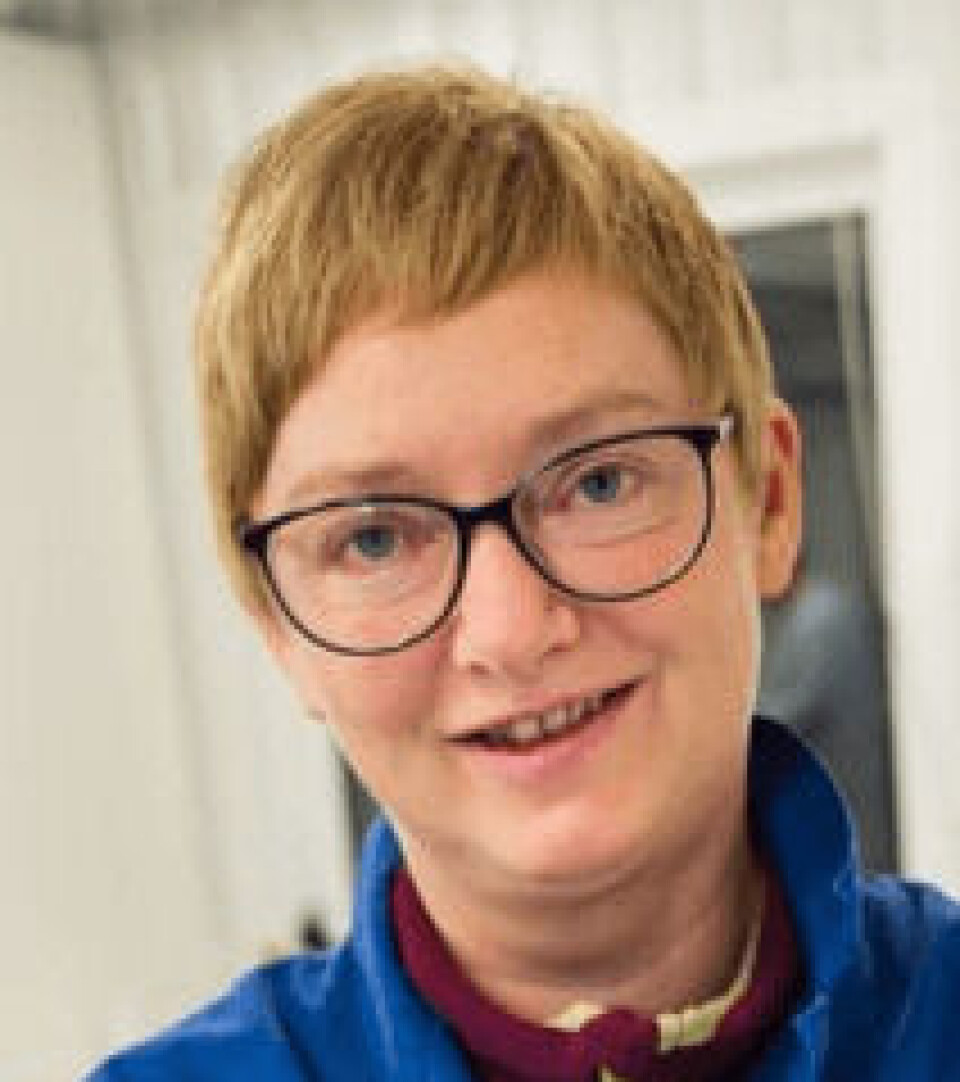
Taking a deep dive into salmon production in RAS
The growing importance of recirculating aquaculture systems (RAS) for Scottish aquaculture has been explored in a two-day event organised by fish health and research company STIM.
More than 80 invited participants from Scottish aquaculture took part in the event at the Scottish Association for Marine Science (SAMS) at Dunstaffnage, Oban.
It is predicted that more than half a million tonnes of salmon will be grown around the world in RAS systems by the end of this decade.

Larger smolts
In Scotland, the current focus is on production of larger smolts in RAS facilities where the production environment can be strictly controlled, whereas in Scandinavia many companies are planning or building egg to plate RAS systems.
A panel of technical experts and academics gave presentations over the two days, chaired by Dr Heather Jones, chief executive of the Sustainable Aquaculture Innovation Centre, and Iain Berrill, head of technical for Salmon Scotland, with host STIM focusing on the benefits of its smoltification feed SuperSmolt FeedOnly in post-smolt production.
Event organiser Campbell Morrison, of STIM, said: “It was inspiring to see the enthusiasm and passion from across our industry coming together to share knowledge and best practice to further improve health welfare and production in RAS. STIM is proud to have played its part in organising it.”

Hatchery tour
Delegates first enjoyed a tour of Scottish Sea Farms’ hatchery at nearby Barcaldine, to see the latest equipment and systems in use, before Dr Sunil Kadri, chair of STIM UK, invited Mairi McAllan, Scotland’s Minister of Environment and Land Reform, to open the proceedings.
The event kicked off with presentations on the challenges of and solutions for RAS farming by Rory Conn, head of fresh water for SSF, and John Richmond, broodstock and post-smolt development manager for Mowi Scotland. Conn argued that people are the single biggest asset, making clear pathways for career progression and personal development more important than ever in terms of employee retention.
Collaboration will also be critical to future growth and expansion. “The overarching purpose of the event was to encourage the sharing of best practice by forging new connections and re-establishing existing connections, so it was great to have so many different producers and partners involved. I’m confident we will see much greater dialogue across the sector as a result,” said Conn in a press release about the event.
Water quality
Richard Torrissen, from Norwegian land-based aquaculture supplier Artec Aqua, spoke about the importance of optimising RAS management and water quality to ensure a high-quality output of smolts, and Professor Herve Migaud, health, welfare and biology director for Mowi Scotland, assessed the impact of RAS on smoltification.
Industry’s latest goal, super post smolts, was covered by Mathias Andersen, of STIM Norway, who explained how SuperSmolt FeedOnly keeps fish in the smolt window, making it an efficient tool for larger smolt production.
Richmond, who has worked in freshwater hatcheries for 26 years and project managed the design and construction of Mowi’s new Lochailort and Inchmore RAS farms, assessed whether loch fish perform better than RAS fish, in his presentation on the risk factors involved.

Early maturation
Maren Mommens, senior researcher with ova supplier AquaGen, presented on the issue of early maturation in Atlantic salmon farming and explained that fish farmers can control early maturation to a certain degree through the production environment and feeding strategies. However, tools can also be applied to reduce early maturation in egg production, such as removal of early maturing fish from the broodstock pool, along with genomic selection, which became possible from 2015 when genetic markers for late maturation were discovered in Atlantic salmon.
Dr Trine Ytrestoyl, from Norwegain research institute Nofima, considered whether large smolt are the future for salmon farming, or whether producing post-smolt in RAS is a better alternative for reducing the time salmon spend at sea. Shortening sea-time is a main goal of salmon farmers in order to reduce the incidence of gill disease and issues with sea lice.
DNA vaccine
Fish vet Ana Rita Silva, head of technical services for Elanco Aqua Europe, presented on the development of a nucleic acid (DNA) vaccine for pancreas disease (PD). Vaccination is known to reduce mortality and severity of clinical PD, but the introduction of a DNA vaccine that would directly introduce a plasmid containing the DNA sequence encoding the antigen for PD offers a radical new approach to fish health.
Pieter Van West , director of the International Centre for Aquaculture Research and Development at the University of Aberdeen, put the focus on the opportunistic fungal pathogen Saprolegnia, which is also known as winter kill.
Also looking at disease was Aquaculture biologist Karin Pittman from Quantidoc, who outlined how mucosal protection in fish adapts to a RAS environment. Pittman explained that a membrane just 0.07mm thick determines fish health and that mucous cells are the gatekeepers of health and immunity, containing antiviral, antibacterial, antifungal and antiparasitic substances.
Quantidoc has developed methods for measuring the mucosa on skin, gills, and intestines, which provide an objective indicator of a fish’s robustness and its potential for further development and growth.
Pro-active health management
The need for pro-active veterinary health management in RAS was ably tackled by Ronnie Soutar, head of veterinary services at SSF.
Lindsay Pollock, head of sustainability at producers’ and supply chain body Salmon Scotland rounded off the event with a presentation on the organisation’s Sustainability Charter, which focuses on animal health and welfare, minimising the environmental impact of salmon farming, full traceability from farm to fork, including all raw materials, investing in training and development of people, and greater engagement with communities as good neighbours.
Morrison now hopes that the event will become a regular highlight on the salmon farming calendar and will help the RAS sector to develop and flourish.























































